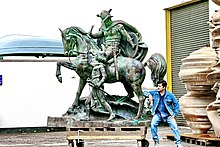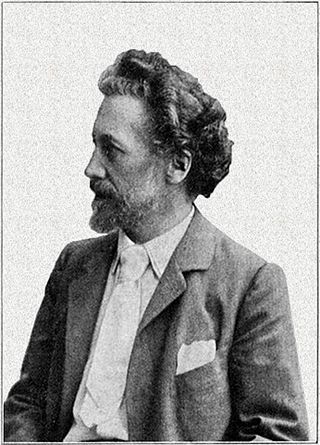

Shwan Kamal was born in the city of Sulaimaniyya in Iraqi Kurdistan in 1967. He is a Kurdish and German artist and sculptor. [1] [2] [3] [4] [5] [6]


Shwan Kamal was born in the city of Sulaimaniyya in Iraqi Kurdistan in 1967. He is a Kurdish and German artist and sculptor. [1] [2] [3] [4] [5] [6]

Shwan Kamal was born in the city of Sulaimaniyya south of Kurdistan He studied art at the Institute of Fine Arts. He obtained a diploma in sculpture with honors degree and obtained a Bachelor of Arts from the Academy of Fine Arts from the University of Baghdad in 1991. [7] studied the art of sculpture at the hands of great artists and professors such as Dara Hama Saeed, Ismail Fattah Al-Turk, Muhammad Ghani Hikmat, Saleh Qargoli and Mortada Al-Haddad After graduating from the Academy of Fine Arts in 1991, he returned to the city of Sulaymaniyah and worked as a teacher in the Fine Department of Sculpture until 1994, after the outbreak of the civil war in Kurdistan and the deterioration of the political situation he immigrated to Turkey and then to Greece and settled in Germany since 1995 and obtained German citizenship From 1995 to 2000 he worked as an artist in the foundry (Raymond Keitel) in Düsseldorf, after 2000 until 2015 he worked in the foundry (Rolf Kayser (Kunstgießer)) after a year 2015 Shawan moved to the Kingdom of Sweden, so far he lives and works in Malmö, Sweden. [8] In 2018 he earned a Bachelor of Fine Arts, majoring in plastic arts and sculpture. [9]
After graduating from the Academy of Fine Arts, Shawan Kamal set up many artistic projects and statues in many cities in Kurdistan, Iraq and Europe. [10]
After completing his studies of art in 1991, Shwan had a dream of having projects, artworks and memorials in Kurdistan, and he made some of these works until the outbreak of the civil war and its migration to Europe, from these works and statues:






The Patriotic Union of Kurdistan is a political party active in Kurdistan Region and the disputed territories in Iraq. The PUK describes its goals as self-determination, human rights, democracy and peace for the Kurdish people of Kurdistan and Iraq. The PUK is currently under the leadership of Bafel Talabani. The PUK was founded in 1975 by Jalal Talabani, Nawshirwan Mustafa, Fuad Masum, Adel Murad, Ali Askari and Abdul Razaq Feyli Dawood Mohammed Ali. All presidents of Iraq under the 2005 constitution have been from this party.

Sulaymaniyah or Slemani, is a city in the east of the Kurdistan Region of Iraq and is the capital of the Sulaymaniyah Governorate. It is surrounded by the Azmar (Ezmer), Goizha (Goyje) and Qaiwan (Qeywan) Mountains in the northeast, Baranan Mountain in the south and the Tasluja Hills in the west. The city has a semi-arid climate with very hot dry summers and cold wet winters.

The Anfal campaign was a counterinsurgency operation which was carried out by Ba'athist Iraq from February to September 1988 during the Iraqi–Kurdish conflict at the end of the Iran–Iraq War. The campaign targeted rural Kurds because its purpose was to eliminate Kurdish rebel groups and Arabize strategic parts of the Kirkuk Governorate. The Ba’athist regime committed atrocities on the local Kurdish population, mostly civilians.

Ernst Friedrich August Rietschel was a German sculptor.

Sherko Fayaq Abdullah, was a Kurdish poet. He was born on 2 May 1940 in Sulaymaniyah, Kurdistan Region in Iraq as the son of the poet Fayak Bekas. He is widely regarded as one of the poets who founded contemporary Kurdish poetry. Sherko's poetry explores liberty, love, life, and nature while reflecting the contemporary political, cultural, and spiritual conditions of the Kurdish people. Sherko's poetry on freedom and liberty has influenced many poets such as Ahmad Shamlou and Ali Salehi.

The University of Sulaimani is a public university located in the city of Sulaymaniyah in Kurdistan Region - Iraq. It is one of the important scientific and cultural centers in Kurdistan region. It was founded by Professor Dr. Mohammed Salih Beg in 1968, and re reopened in 1992. The main campus is in Sulaimani city, and satellite campuses are in the towns of Khanaqin, Kalar, Halabja and Chamchamal.

The Elberfeld system was a system for aiding the poor in 19th-century Germany. It was a success when it was inaugurated in Elberfeld in 1853 and was adopted by many other German cities, but by the turn of the century an increasing population became more than the Elberfeld system could handle, and it fell out of use.

Gary Lee Price is an American sculptor.

Eugene Daub is an American contemporary figure sculptor, best known for his portraits and figurative monument sculpture created in the classic heroic style. His sculptures reside in three of the nation's state capitals and in the National Statuary Hall in the United States Capitol. His work appears in public monuments and permanent collections in the United States and Europe.
Anastacio Tanchauco Caedo was a Filipino sculptor. His style of sculpture was classical realist in the tradition of his mentor, Guillermo Tolentino.
Xalîd Reşîd ; was born in Sulaymaniyah, Iraqi Kurdistan, and currently resides in Stockholm, Sweden. He is recognized as one of the most influential interpreters of Kurdish music academically, with an extended knowledge of Persian and Azerbaijani music. Xalîd Reşîd extensively studied oriental musical instruments such as the balaban, which is widely used in Kurdish folk music, the flutes nây and blûr, the oûd (lute) and various percussion instruments.

The original Goethe–Schiller Monument is in Weimar, Germany. It incorporates Ernst Rietschel's 1857 bronze double statue of Johann Wolfgang Goethe (1749–1832) and Friedrich Schiller (1759–1805), who are probably the two most revered figures in German literature. The monument has been described "as one of the most famous and most beloved monuments in all of Germany" and as the beginning of a "cult of the monument". Dozens of monuments to Goethe and to Schiller were built subsequently in Europe and the United States.

Edmund Ritter von Hellmer, born Edmund Hellmer and ennobled in 1912, was an Austrian sculptor who worked in the styles of Historicism and Art Nouveau.

Henry Jackson Ellicott was an American sculptor and architectural sculptor, best known for his work on American Civil War monuments.

Georg Wrba was a German sculptor and graphic artist. He created some 3,000–4,000 works, including as a collaborator of the Zwinger workshop.
Wilhelm Neumann-Torborg was a German sculptor whose works are still well-known.

Karl Gustav Rutz was a German sculptor.
Julius Bayerle was a German sculptor and painter as well as a teacher at the Kunstakademie Düsseldorf.
Eugen Felix Busmann was a German sculptor and academic teacher.

Edgar Fahs Smith is a monumental statue located on the campus of the University of Pennsylvania in Philadelphia, Pennsylvania, United States. The statue was designed by sculptor R. Tait McKenzie and honors its namesake, a former provost of the university.